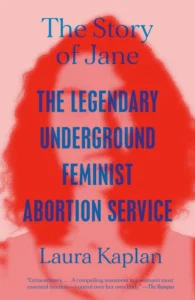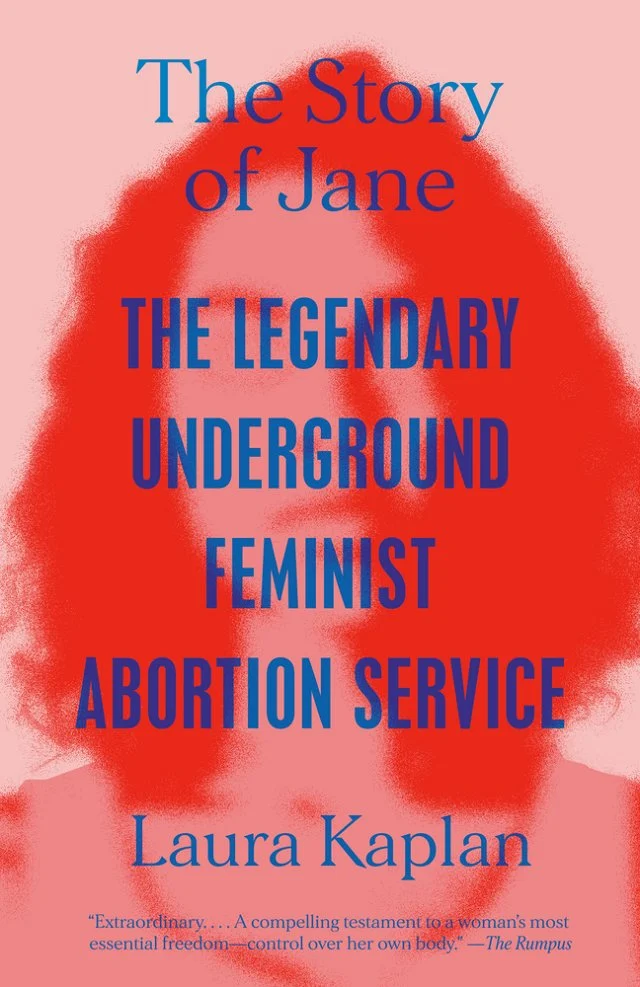So, the thing that you might be able to tell from the title The Story of Jane: The Legendary Underground Abortion Service is that we are going to be discussing abortion in this post. I recognize that abortion is a controversial topic. I don’t know how to discuss Kaplan’s book without making my opinion known, but that should be ok on my blog, right? The comments will be interesting.
This post may contain affiliate links, which means I’ll receive a commission if you purchase through my links, at no extra cost to you. Please read full disclosure for more information.

Publish Date October 25, 2022
Amazon | Bookshop
Summary
The Story of Jane is a work of nonfiction that tells the story of an underground abortion network that provided abortion services in the Chicago area in the years leading up to the Roe v. Wade decision in the US Supreme Court. Author Laura Kaplan was a member of the organization, and can provide her unique insight into the group and how it was run.
An Underground Organization
The organization, commonly referred to as “Jane,” was run primarily by a group of middle-class white women. Jane started as a referral service, but eventually, several members of the organization learned how to perform abortions themselves.
Despite not being medical professionals, it seems the members of Jane were able to perform safe abortions (or as safe as possible under the circumstances). As far as we know, most of the women who received abortions through Jane survived. We only know of one person who interacted with Jane but later passed away. According to Kaplan, this one person died due to injuries sustained attempting to end a pregnancy before she met with Jane. This is impressive, considering all of the horror stories we hear of women dying from botched abortions (and don’t get me wrong – this was absolutely happening as well).
Things Start Changing
As the Roe v. Wade decision drew nearer and nearer, more and more states made abortion legal. Kaplan recounts in The Story of Jane how the organization decided to pivot their practice. If women were able to travel, Jane referred them to abortion providers in states where abortion was legal. The organization focused on providing abortions to women who couldn’t travel.
In The Story of Jane, Kaplan recounts an instance where several members were arrested shortly before the passing of Roe v. Wade. They were able to find a lawyer who was able to delay until the Supreme Court decision and the prosecutor decided to drop the charges.
Once abortion became legal, Jane more or less disbanded. As Kaplan explained, members felt their continued existence was unnecessary.
Thoughts
I’m writing this after my second read-through of The Story of Jane. I first read an earlier edition of Kaplan’s book many years ago when I was a very different person and my beliefs on abortion were very different.
I grew up in a conservative household and was raised to believe that abortion was murder. As I got older, I began to unlearn many of the things I had previously believed about abortion. My first exposure to The Story of Jane was during this metamorphosis, and I credit it in part with helping me better understand some of the issues surrounding abortion access.
The laws in the US regarding abortion were also very different the first time I read The Story of Jane. Roe v. Wade was in effect and abortion was legal – at least to some degree – in all 50 US states.
I decided to revisit The Story of Jane after the Dobbs v. Jackson decision overturned Roe v. Wade. Will organizations like Jane start to appear in states where abortion isn’t available? Only time will tell.
One of the questions I had during this read-through of The Story of Jane was this: why were most of the women working for Jane white and middle-class? How did race and class play a role here? The only real guess I can come up with is that perhaps middle-class women had more resources at their disposal. As Kaplan illustrated, an organization like Jane required a huge time commitment and members could fall back on support networks to help with child care and other obligations. In addition, white middle-class folks tend to fare better in the criminal justice system and the members of Jane surely knew that.
But I confess that’s mostly speculation on my part. As a white woman from a middle-class background, I confess I might be missing some nuance here. Kaplan, for her part, addresses the racial disparity in The Story of Jane. I don’t think that Kaplan can provide any concrete answers to the question either. Kaplan is also a middle-class white woman, so she may be missing some nuance as well. I am interested in reading some perspectives from Women of Color. I’ll have to look into finding some resources.
I listened to the audiobook of The Story of Jane this time around, and I didn’t particularly care for the narrator. If I decide to read Kaplan’s book again, I’ll probably pick up a print edition.
You Might Like This If…
The history of reproductive rights in the United States interests you.
This post may contain affiliate links, which means I’ll receive a commission if you purchase through my links, at no extra cost to you. Please read full disclosure for more information.
Updated:
